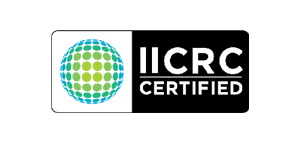Ever thought your headaches and breathing problems might not be just allergies? Mold sickness signs can be sneaky but really hurtful. Knowing the symptoms of mold, especially black mold, can help you act fast before things get worse.
Key Takeaways
- Mold sickness signs include nasal congestion, eye irritation, wheezing, and skin rashes.
- Mold illness symptoms can affect anyone, but individuals with mold allergies or compromised immune systems are more at risk.
- Mold toxicity symptoms can result from prolonged exposure to mold, especially in damp or poorly ventilated areas.
- Mold spores can trigger allergic reactions, leading to immediate symptoms like inflammation and irritation.
- Black mold thrives in moist environments, making basements, showers, and windows common hotspots in homes.
Common Symptoms of Mold Exposure
Mold exposure can cause a range of symptoms, from mild to severe. These symptoms may appear right away or take time to show up. A 2017 study found mold in every public building, with an average of 14 instances per building.
Mold can get into homes through many ways, like doors, windows, and vents. It can also come in on clothes, shoes, and pets. People with allergies or who live in damp places are more likely to get sick from mold.
- Nasal and sinus congestion
- Watery and itchy eyes
- Respiratory problems
- Throat irritation
- Coughing
- Skin irritation
Those with asthma or mold allergies may face worse symptoms. Mold can even trigger asthma attacks. School-aged kids with high indoor mold levels are at higher risk for asthma.
Jobs that involve mold, like farming or carpentry, can lead to serious lung problems. People with weak immune systems are at risk for serious infections from mold. Black mold is often blamed for severe health issues, but studies in 2017 and 2019 found no strong evidence for this.
It’s important to spot mold symptoms early and fix the mold problem fast. Using dehumidifiers, air conditioning with HEPA filters, and good ventilation can help stop mold growth. This can also lessen the severity of mold symptoms.
What are signs of mold sickness?
Mold sickness symptoms start when you breathe in mold spores and chemicals from mold. You might sneeze, cough, or have a sore throat. These signs can mean you’re getting sick from mold. In some cases, you might get skin problems like rashes or hives.
Being around mold for a long time can make health problems worse. You might get allergies or diseases that affect your immune system. Mold can also make asthma worse or cause more infections.
About 24% of people might show symptoms from mold. Doctors might not always know it’s mold sickness. So, knowing the signs is key to getting the right treatment. This could mean changing your environment or detox therapies.
- Persistent respiratory issues mold can cause, including wheezing and coughing.
- Skin irritation manifested as rashes or hives.
- Chronic fatigue and weakness signaling prolonged mold exposure.
- Neurological symptoms like headaches and light sensitivity.
- Eye irritation with red, watery, or itchy eyes.
- Memory problems and difficulty concentrating.
Mold can grow fast after water damage, often in just 24 hours. So, acting quickly is important to avoid health problems. Taking steps to prevent mold can make your home safer and healthier.
High-Risk Groups for Mold Sickness
Some groups face a higher risk from mold exposure. Infants and children are more vulnerable because their immune systems are still growing. The elderly are also at risk due to weaker defenses with age.
People with breathing problems like asthma or COPD are more likely to have severe symptoms. This is because mold can make breathing even harder for them.
Those with weakened immune systems are especially at risk. This includes people getting chemotherapy, transplant patients, and those with HIV/AIDS. They might get sicker from mold exposure.
Being exposed to mold many times can make anyone more sensitive. But, people with allergies in their family might react worse. Jobs in places with mold, like lumber mills, also increase the risk.
Some molds, like Stachybotrys and Aspergillus, can produce harmful toxins. To avoid health problems, it’s key to control moisture and ensure good air flow in homes and workspaces.
Conclusion
It’s important to know the signs of mold sickness and its health effects. Mold grows in damp, poorly ventilated areas. It’s crucial to fix leaks and improve ventilation to stop mold.
Groups like infants, children, and people with breathing problems are at high risk. Living in moldy homes can lead to asthma in kids by age seven. Schools with mold also see more asthma symptoms in students.
Studies show that fixing mold issues can help reduce asthma symptoms. So, treating mold quickly is key, especially in homes with vulnerable people.
Low-income areas and migrant workers often face more mold risks. Bad housing and poor ventilation are common. Climate change makes these problems worse, leading to more mold.
Mold can cause many health problems, from breathing issues to brain and stomach problems. Getting help from doctors and mold experts is important. Regular checks and action can keep homes safe and healthy for everyone.





